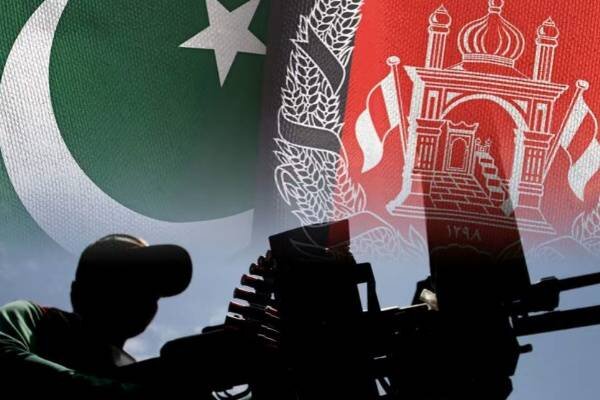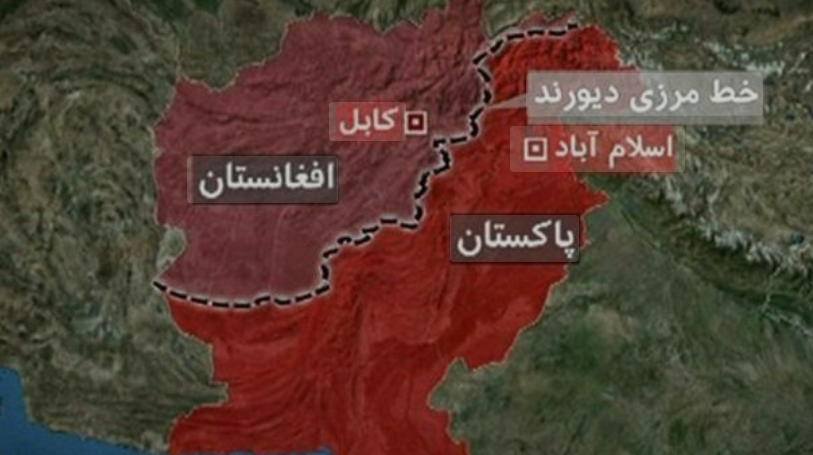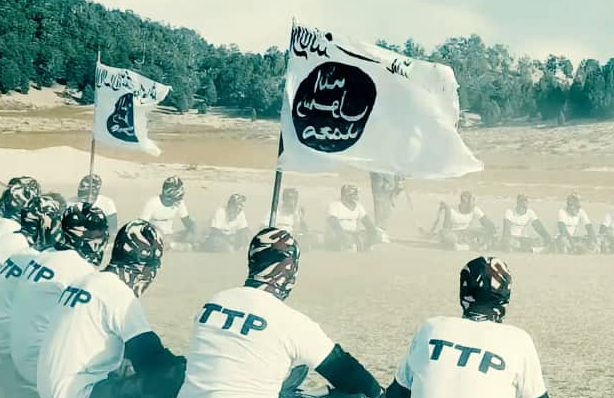Restless Border: How Will the Afghanistan-Pakistan Clash Unfold?

Mehr News agency, International Desk, Hassan shokouhi Nasab: Since the night of October 11 this week, the 2,640-kilometer border between Afghanistan and Pakistan has witnessed some of the bloodiest military confrontations in two decades. Taliban forces from Afghanistan and the Pakistani military engaged in armed clashes at multiple border points. Official figures report at least 23 Pakistani soldiers killed; however, Taliban claims indicate as many as 58 Pakistani military fatalities. On the other hand,Islamabad alleges that around 200 Taliban fighters and affiliated militants were killed.
This fighting occurred only months after a four-day war in May when Pakistan’s air force launched aerial strikes on Khost and Paktika provinces in eastern Afghanistan. These events reflect deepening security crises along one of the world’s most unstable borders-a frontier that not only separates two neighboring countries but also carries a legacy of British colonialism along with decades of mistrust,misunderstanding,and violence.
Historical and Structural Roots of the Crisis
Colonial Legacy: The Durand Line
The principal source of tension over this border dates back to 1893 when Sir Mortimer Durand, then Secretary to British India’s goverment, signed an agreement with Amir Abdur Rahman Khan of Afghanistan establishing an official boundary between British India (now Pakistan) and Afghanistan. Known as the Durand Line, this demarcation split Pashtun tribes across two sides-sowing seeds for persistent disputes.
Afghanistan does not recognize this line as a legal or permanent border but views it as a colonial imposition extracted under duress. Even during its first rule (1996-2001),despite close ties with Pakistan’s government then led by Taliban allies,Kabul refused to acknowledge this boundary officially. Conversely, Pakistan regards it as a legitimate international treaty that must be accepted by Afghanistan-a fundamental disagreement over legitimacy fueling much contemporary tension.
Post-2001 Developments: Security Complexities
The US invasion of Afghanistan in 2001 and subsequent fall of the Taliban reshaped regional security dynamics significantly. In subsequent years, both countries’ border regions became hotspots crowded with various armed groups operating across these lines.
The Tehrik-i-Taliban Pakistan (TTP), founded in 2007 aiming to establish Islamic Sharia law inside Pakistan while opposing state military presence within tribal areas has emerged as one of Islamabad’s gravest security threats. According to official statistics for 2024 alone,Pakistan lost about 685 security personnel across 444 terrorist attacks targeting its territory.
Afghanistan simultaneously occurring faces insurgency from various rebel factions-some alleged by Kabul officials to receive support from within Pakistani soil-and consistently accuses Islamabad of meddling domestically while backing such groups militarily or politically.
Divergent Foreign Policies Between two Nations
Both states grapple with complex dualities shaping their foreign policies toward each other amid competing internal challenges.
Pakistan’s long history reveals ambivalent ties with Afghan Taliban networks; Islamabad views Kabul strategically crucial vis-à-vis India influence containment but simultaneously battles significant TTP insurgency supposedly nurtured just across porous borders inside Afghan territory.
On its end,Afghan authorities exercise conflicted stances:Taliban rulers who reclaimed power August 2021 maintain ideological kinship rooted historically & ethnically linking them closely with TTP operatives.
This intertwining complicates firm action against militant elements whereas sustaining commercial & economic engagement still remains vital given regional dependencies on trade corridors through Pakistani soil.
Eruption Of Violence With Alarming Casualty Statistics
The overall security environment worsens dangerously on both sides:
In pakistan,based on CRSS data,over 2,,400 casualties were recorded due to terrorist activities throughout first three quartersof 2025.
The Ministryof Interior disclosed more than 1,,500 violent incidents over ten months reporting upwardsof900 deaths -including487 security forces personnelPlus351 civilians affected).
Afgahanistannot escapes instability ordeprivation either.Strikes perpetratedbysomePakistanaircraft,cross-border skirmishes,andeconomic disruptions owingto checkpoints’ closurecontinue deeply affecting livelihoodsfor millionsvulnerable civilianswithinproximate districts.
MULTI-DIMENSIONAL CONSEQUENCES OF BORDER CONFLICTS
A prominent immediate outcomeis mutual distrust antagonizing bilateral relations sharply.Bothcountries accuseeachother respectivelyforeign national sovereignty violations.Pakistan chargesKabul harboringTaliban-linkedarmed offendersrefusing controlmeasures directedagainst.Tensions escalateasAfghanistan denouncessovereignairstrikeviolationspersistentlydemanding cessation.Impunity breedsrepercussionsamong commerce,cultural exchanges halting industry flow severely impactingcorrespondentborder economies .Geographicallysealingbackfurlongboundariesstopsmigrationlevels transfers causing economicfinancial losses cumulative burdenincreasing exponentially duo countries alike .
An urgent humanitarianradar iswaring.Alreadycivilians,the vulnerablerefugeesbecomefirst casualties.ThePakistanigovernment tightenedvulnerability clamp sinceyears imposingexile upon approximatleythree millionlong-standing Afghandescribedassecurity urgencywithaddedhumane costafflicting returnterritories.Anothersetincludecaught civilianpeople residingadjacent territoriesfacing bombardmentartilleryattacks,massably displaced thousands shifted safe ground abandonhomelands seeking refuge temporarilyfacility existence threatening demographicconfigurations furtherstack strained local governance systems.+`
Regional spillover risks provoke neighbors”concern.Iran which maintains diplomatic legalizationallies voices restraintcallingpeacefulsettlements.” Abbas Araghchi,” IranianForeignMinisterhighlightsed,” Stabilitybetweenaparthelk coexistence cultivate overarchingregional peace gains”.
Saudi Arabia,Qatarhistoricalpartners extend joint messaging urging dialog patienceavoid escalation.AgainstthisbackdropIndia recently hostedAmir Khan MuttaqiTaliban foreign minister inauguralofficial visitsignifying delicate stance,Growing Delhi-Kabul rapport compoundsIslamabads worriesadding fresh complexities Asia context-.
International Ramifications Amid Major Powers’ Stances
Their role must not go unmentioned.China,Russia,Iran,Pakistan convene strategic quadrilateral format elaborately seeking coordinated policy via consultxc meetings.Held last SeptemberoutsideUN General Assembly discussed regionalsecurity stabilization agendas.
China dominates economically fostering Pakistans principal partner bolstered key initiatives like China-Pakistan Economic Corridor(CPEC) expanded ambitions linkingwithAfghanistan.Tension endangers BRI projects prompting Beijing promots callsrestraint,favors negotiation resolution pragmatically.
Russia eyes broadeningsway CentralAsian sphere fearingcontagion instability crossing intofragiles republics strongly advocatesinclusive political dialogues.
Future Outlook : Peacebuilding Or Protracted Conflict Continuance?
Security experts see low risk escalation towards full-scale warfare.Asif durrani ex-ambassadortoPakistan,and Special Envoy afghan affairs notes neither side holds incentives intensify trenches.Afghan ground capabilities limitedconventional warfareresource constraints limit prolonged combat similarly taxingPakistan’s assets sustainably.Ebrahim Bahisssenior analystInternational Crisis Group stresses priority de-escalation considering concurrentresponsesfrominternal pressures Forcing diplomacy maneuver early interventions avoiding catastrophic outcomes
At present,diplomaticchannelsmediation urgently called forth.The resolveroute lies dialoguereturn constructive talks wherein both parties recognize intertwinedsecurity realities acknowledging-origin swarm cascading rippleeffect adjacent lands.Isaac DareDeputy Prime Minister&foreign ministerPunjabpakistan frequent consultations ongoing representatives afghansupportedmutual undertakings mitigating upsurge.Stillverbal assurance insufficient implementingframework essentialinitiating trust confidence buildingmeasuresneeds executed formally operational procedures.
Neighbouring friends like China Iran Saudi arabia positioned efficiently function intermediaries potentiatingexternal diplomatic pressure stimulating revival negotiation efforts Still structural reforms addressing centralissues paramountDurandLine controversies,resistance fighting factions notably TTPcross-border conflicts require longterm multifaceted strategies.Cooperation managing borders sharing intelligence counterinsurgency programsjointly advancing trade facilitating lawful transit goods people constructingg transboundary free zones contribute significantly lowering hostilities enhancing peace prospects effectively.





